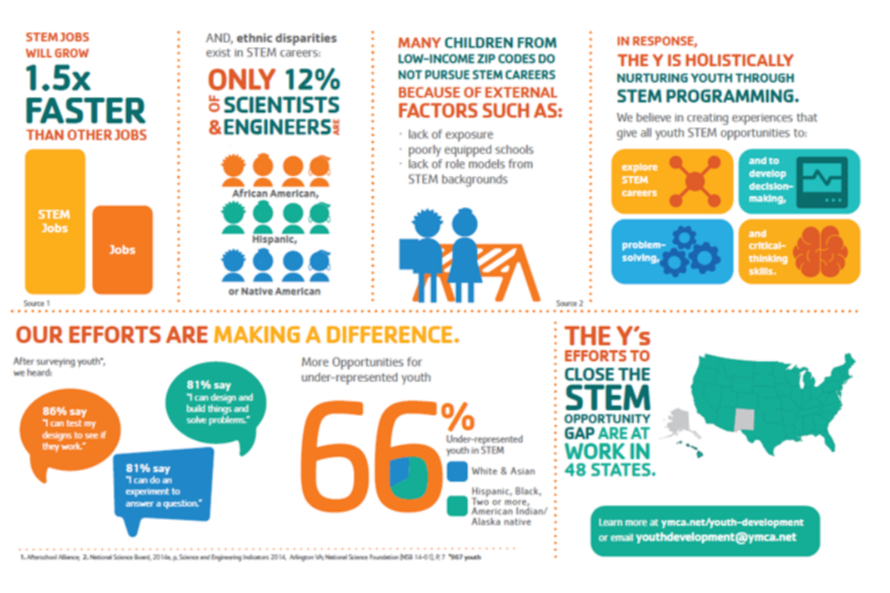I remember it like it was yesterday: 5th grade, Mr. Morgan’s Math and Science class: We were talking about dissolving solids in solutions. He asked, “Will sugar dissolve faster in cold water or hot water?” My hand shot up along with most of the boys in the room. Only one other girl raised her hand. He called on me, and I, a Koolaid master, said confidently, “in cold water.” He politely informed me I was incorrect. The laughs from the boys stung. The giggles from the girls cut deeply. He explained why my answer was incorrect by conducting an experiment and had me assist. I understood the concept. I was determined to ignore the laughter. I used that very experiment many times in my own science class. Mr. Morgan was the teacher that gave me life in elementary school. He recognized that a few of the girls in his class were budding scientists and didn’t discourage our curiosity. He’d threaten the boys if they laughed at us and used examples of how science affects the daily lives of us all that the other girls begrudgingly accepted. I was lucky to have him as a teacher. My love of science could have been squashed otherwise. His support of our interests was important.
Consider this: Girls become interested in science and math by around age 11 and lose interest in these subjects by age 15. (1)
There are several barriers to getting girls interested and keeping them interested in STEM. A couple of them are high on my “fix it” list: Content & Context and Educational Equity.

Content and Context
Assessment formatting can affect the way girls perform in STEM classes. Research shows that girls tend to do better on reading/ELA tests and boys do better on math tests.(2) Reading/ELA tests are usually open ended, essay type questions while math tests tend to have more multiple choice questions. How concepts are assessed can affect student agency in students. Girls tend to do better on open ended problems, so create assignments and assessments that provide the opportunity to “discuss the answer” or “demonstrate the answer” as opposed to simply “providing the answer.” Move away from multiple choice questions (a staple of math and science classes) and give students the opportunity to show mastery in a different way. More on THAT in a future blog post. Speaking of student agency, creating assignments that are relevant to students, particularly girls help them see how what they’re learning affects their daily lives and how they can work to affect change in those areas if they choose. Get to know your students, particularly the girls. What is important to them? What are their interests? Help them set personal and class goals. Support them as they work toward these goals and celebrate their accomplishments. Give them the freedom to “get dirty” and play with the “toys and tools” of technology. Once you see what’s important to them, your lessons can center around those interests, thus further supporting their interests.(3)
Educational Equity
Before moving forward on this topic, let’s define equity and how it’s not the same as equality. Equity is the quality of being fair and impartial. Equality is the state of being equal (same), especially in status, rights, and opportunities. They aren’t the same. Equality assumes everything/one is the same, of the same quantity or quality and/or status. Equity assumes everything/one is given the same level of fairness or impartiality. The difference between them is the notion of opportunity. If girls/women, IBPOC, and persons with disabilities are prepared to work in STEM at the same rate they are prepared to work in other industries, the high-tech labor demand could be met.(4) This dovetails on the content and context issue in that a girl that loses interest in STEM because of a lack of context to her life and her ability to be successful in the industry is a woman who is lost to the STEM industry and who chooses, instead to work in a different field. In most STEM classrooms, girls are given equal access to knowledge, yet they aren’t afforded impartiality or fairness in HOW they process that knowledge (see example on assessment questions above). Educational equity assumes that girls are given the same opportunity to learn with an understanding that most girls learn differently than boys.(5) This is where differentiation comes into play. This is where initiatives like Project Based Learning, collaborative learning, and experiential learning provides opportunities for girls to shine.(6) Research shows that girls like to collaborate with each other and in mixed groups with boys also, where boys tend to want to work alone.(7) This research also shows that the mixed groups, through their synergistic nature, provide the most successful use of minds and abilities to complete a task or project. This is important because in work settings, it’s important to be able to work with a mixed group of coworkers and providing this model in classrooms allows both boys and girls to appreciate the abilities and contributions of their classmates that working alone or in single gender groups may not provide.

Conclusion
So, where does one start to begin supporting girls in STEM Education? It starts with a mindset change with educators, curriculum developers, and professional development professionals. What do girls see in their lessons? How do teachers react to their responses to questions? When do girls get an opportunity to shine in the science or math classroom? Counselors can begin steering girls towards STEM courses at the AP and Honors levels in high school instead of away from them. Administrators assist by making sure that curriculum used is equitable and content and context reflect the diverse population of any given community so students can see representation on various intersectional levels (even in a homogenous community, teaching diversity is important as we live in a diverse society, not in bubbles). Finally, policy makers must recognize that gender equity is a CIVIL RIGHT and should always be considered when making decisions about what is taught and how. It is our job as educators to always reflect on our practice and how we are providing opportunities for students to learn and grow. We are helping them to make decisions about who they want to be and what they will choose to do with their lives. Remember always to remain cognizant of the needs of both girls and boys as we do our work.
- (2017, February 28). The exact age when girls lose interest in science and math. Retrieved February 13, 2021, from The exact age when girls lose interest in science and math (cnn.com)
- (n.d.). The Relationship Between Test Item Format and Gender …. Retrieved February 13, 2021, from The Relationship Between Test Item Format and Gender Achievement Gaps on Math and ELA Tests in 4th and 8th Grade | Center for Education Policy Analysis
- (2017, March 23). 5 Ways to Develop Learner Agency – STEM JOBS. Retrieved February 13, 2021, from 5 Ways to Develop Learner Agency – STEM JOBS
- (n.d.). STEM Equity | National Alliance for Partnerships in Equity. Retrieved February 13, 2021, from STEM Equity
- (n.d.). With Boys and Girls in Mind – Educational Leadership – ASCD. Retrieved February 13, 2021, from With Boys and Girls in Mind – Educational Leadership
- (2020, February 27). How to Employ a Differentiated Mindset When Teaching STEM. Retrieved February 13, 2021, from How to Employ a Differentiated Mindset When Teaching STEM
- (2018, October 25). (PDF) Does Gender Matter for Collaborative Learning?. Retrieved February 13, 2021, from (PDF) Does Gender Matter for Collaborative Learning?
Resources
Please login or register to claim PGPs.
Alternatively, you may use the PGP Request Form if you prefer to not register an account.



